Stepping into Guara’s limestone cliffs and winding trails, I honestly felt like I’d landed on another planet. Every twist in the path brought something unexpected—narrow canyons, old ermitas hidden from view, and high ledges where vultures drifted lazily overhead.
Hiking Guara’s limestone landscapes let me wander through untouched nature and uncover secrets tucked into its dramatic scenery.
The trip wasn’t just about the views, though. I stumbled across peaceful hilltop hermitages and watched vulture colonies soar over quiet valleys.
Wildlife and old stone buildings mixed together, so every day felt fresh and memorable.

Guara has this wild, raw beauty that’s perfect if you want scenic hikes with a bit of history and the thrill of spotting local wildlife. There’s something special about finding places few people see, and soaking up the silence and sights that make the region what it is.
Exploring the Heart of Guara’s Limestone Wonderland
As I started out, Guara’s limestone world opened up with surprises at nearly every corner. Trails twisted through ancient stones, and the sky and wild birds kept changing the mood.
First Steps onto Pristine Trails
I set out early, and the trailheads felt peaceful, almost untouched. Trail markers were scarce, so I stuck with a simple map and looked for clear signs at each junction.
Some trails had red and white blazes, while others relied on cairns—those little piles of stones.
The scent of wild thyme drifted along the tracks. Most of the ground was uneven and full of loose rock, so I wore sturdy hiking boots for grip.
A walking stick saved my knees on steep descents and rocky steps.
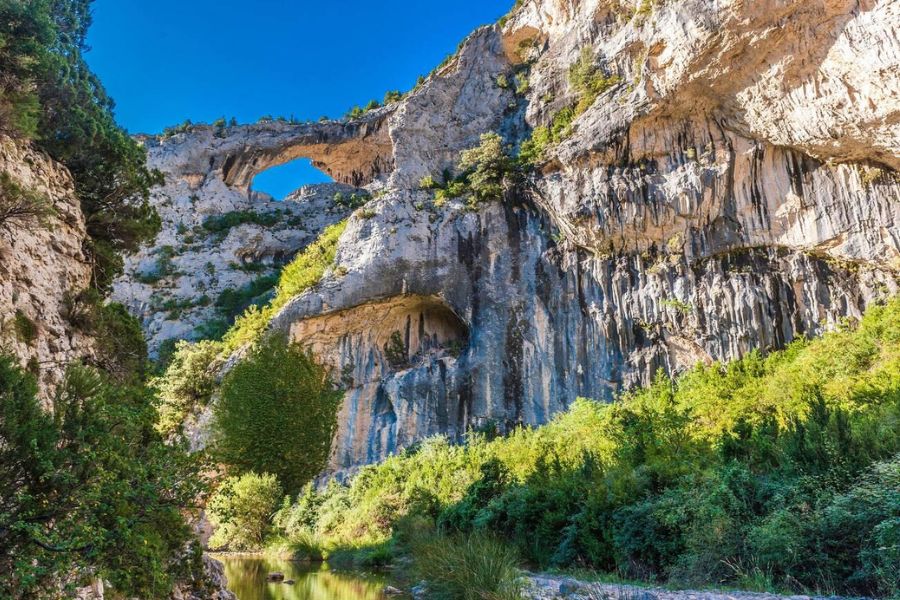
I carried a reusable bottle since natural springs were rare and sometimes questionable. Now and then, I’d spot stone benches or a small ermita—those old stone chapels—nestled into the hills.
They made perfect spots to pause, snack, or jot down a few thoughts before moving on.
Navigating Dramatic Karst Formations
The karst landscape grew more dramatic as I hiked deeper in. Towers of pale stone loomed up, full of cracks, tunnels, and overhangs.
Some rocks looked like tables or arches—nature’s own sculptures after years of wind and rain.
These formations gave me shelter from the midday sun and sudden gusts. Climbing through narrow gullies and along high ridges, I found caves, sometimes with fossils tucked into the walls.
One day, I watched griffon vultures circle overhead. Their nests clung to the cliffs, and with a bit of patience, I caught them feeding their chicks.
Here’s a quick list of wildlife I spotted:
| Animal | Where I Spotted It |
|---|---|
| Griffon vulture | Near vertical cliff edges |
| Chough | Around high rocky outcrops |
| Mountain goat | Low ledges near shady brush |
Wandering through these stone labyrinths, I almost felt like I’d slipped into a lost world.
Seasons and Weather: What to Expect
Guara’s weather changes fast, and every season brings something different. In spring, wildflowers popped up in cracks and meadows, but sometimes fog clung to the valleys.
Summer brought bright sun and hardly any shade, and by midday, the heat could get rough.
I planned my longer hikes in spring and fall, when the air stayed cool without getting too cold. Winter trails often iced over, making some routes slippery or closed.
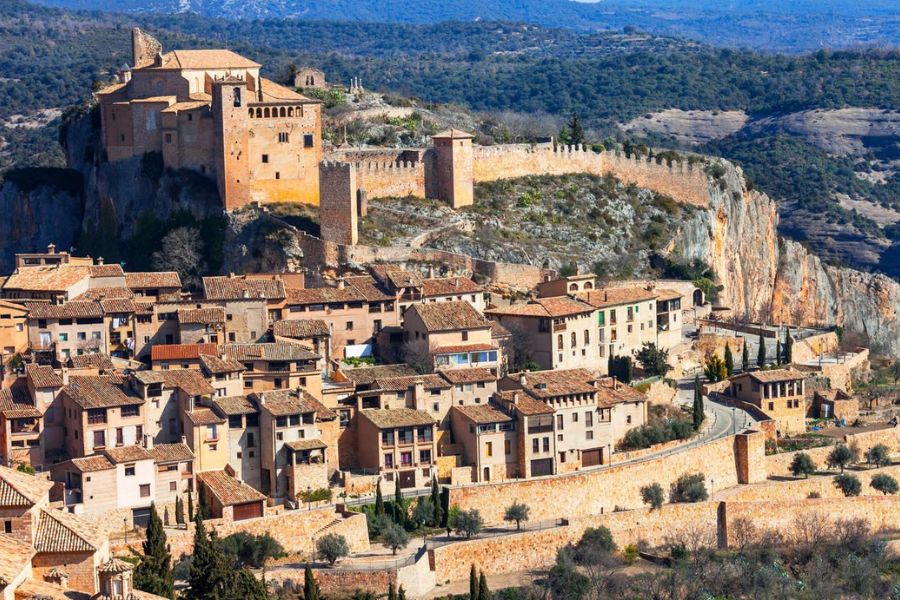
I always checked the forecast before heading out and packed a light rain jacket or windbreaker just in case.
Some essentials I never left behind:
- Hat for sun
- Layers for shifting temps
- Rain jacket for surprise showers
- Sunscreen and extra water in summer
Clouds could roll in fast, changing the mood from bright to brooding in minutes. This mix of sun, wind, and shadow made every visit to Guara feel different—even if I’d walked the same path before.
Hidden Ermitas: Encountering Sacred History
Limestone cliffs keep secrets from centuries past. Quiet trails lead to ancient hermitages and the stories folks still tell about them.
Discovering Medieval Hermitages in the Cliffs
One of the coolest things I found was a tiny hermitage carved right into the rock. Some were so hidden, they nearly disappeared into the limestone.
Climbing a narrow path, I spotted an arched doorway. The faded paint and worn steps showed just how old this place was.
A local sign called it Ermita de San Martín, built back in medieval times. Inside, it felt calm and cool, with simple carvings and old symbols scratched into the walls.
These hermitages—locals call them “ermitas”—were built by monks looking for peace and solitude. Many have stood for 700 years.
I saw moss creeping over the walls and light sneaking in through tiny windows. Most tourists never find these ermitas, but if you ask me, they’re worth the climb.
| Hermitage Name | Era Built | Notable Feature |
|---|---|---|
| Ermita de San Martín | 13th cent. | Carved altar and cross |
| Santa María de la Peña | 12th cent. | Cliffside views |
| Ermita de San Urbez | 15th cent. | Hidden cave entrance |
Legends and Local Lore Along the Path
As I walked between ermitas, I picked up stories from locals and guides. Some say a monk once lived here for years, talking only to birds and mountain goats.
Near one chapel, an older man shared a tale about mysterious lights glowing at night against the rocks. Legend says these lights guide lost travelers or honor the monks who prayed here.
Another story claims the vultures guard these holy places, making sure no one disturbs the peace.
Kids from nearby villages sometimes leave coins or wildflowers at the stone doors. Villagers still feel a connection to the old ermitas, and on certain feast days, they hike up together and share food in the quiet shade.

Tips for Respectful Visits
I always try to show respect at these sacred spots. I stick to marked paths and avoid trampling fragile plants near the entrances.
Some tips that worked for me:
- Stay quiet: Keep voices low to respect the peaceful vibe.
- No graffiti: Don’t mark walls or leave trash.
- Don’t move objects: Leave offerings, stones, or altars where they are.
- Wear good shoes: Some trails get steep or loose.
If we all follow these simple rules, the ermitas stay safe for future hikers and the tradition lives on.
Vulture Colonies and Wild Encounters
Sierra de Guara is a real haven for wildlife. Tall cliffs shelter vulture colonies, and the valleys below are full of surprises.
Hiking here, I often stopped to watch birds soar or found new animal tracks in the dust.
Spotting Griffon Vultures Above the Limestone
The limestone cliffs in Guara almost seem made for vultures. Griffon vultures steal the show—huge birds with broad wings, gliding slowly over the gorges.
Their wingspan is honestly bigger than my own arm span.
Most days, I caught them riding thermals above the canyon. Sometimes, dozens floated on invisible currents, searching for food.
I learned these birds often nest in colonies tucked into steep rocks. With a decent pair of binoculars, I could spot their pale heads and dark feathers.
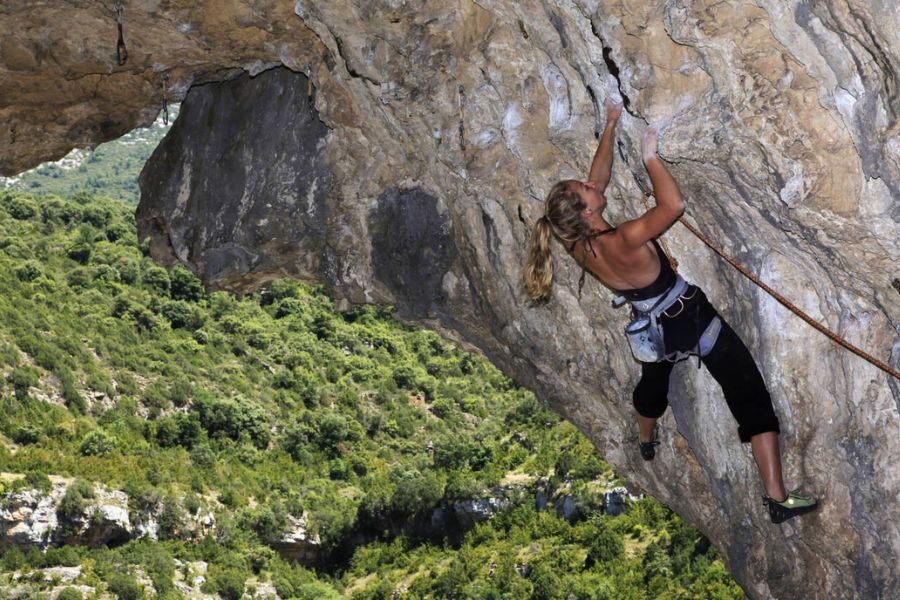
Early mornings gave me the best views. The light made their shapes stand out, and if the village below was quiet, I could even hear their wings cut through the air.
Watching them glide above untouched limestone felt magical—and a bit humbling, to be honest.
Other Remarkable Fauna in Sierra de Guara
Vultures are just the beginning; the place buzzes with life. I saw ibex grazing on rocky slopes and caught glimpses of shy foxes darting between the juniper.
After rain, wild boars left their prints in the soft trail dust.
Birdwatching turned out to be a treat—besides griffons, the cliffs and pine forests host Egyptian vultures, kestrels, and hoopoes. Early summer brought flashes of butterfly wings and the sound of crickets in the grass.
At streams, I’d watch frogs dive and lizards bask on warm rocks. Not every creature wanted to be seen, but with patience and a slow pace, I always got a surprise or two.
Responsible Wildlife Observation
Watching animals in Guara is a thrill, but it means respecting their space. I keep my distance from nests and dens, since trails sometimes run close to cliffs or through quiet woods.
Basic habits go a long way. I avoid loud noises, pack out my trash, and use binoculars instead of creeping too close.
If I find flowers, eggs, or feathers, I leave them where they are—nature belongs here, not in my backpack.
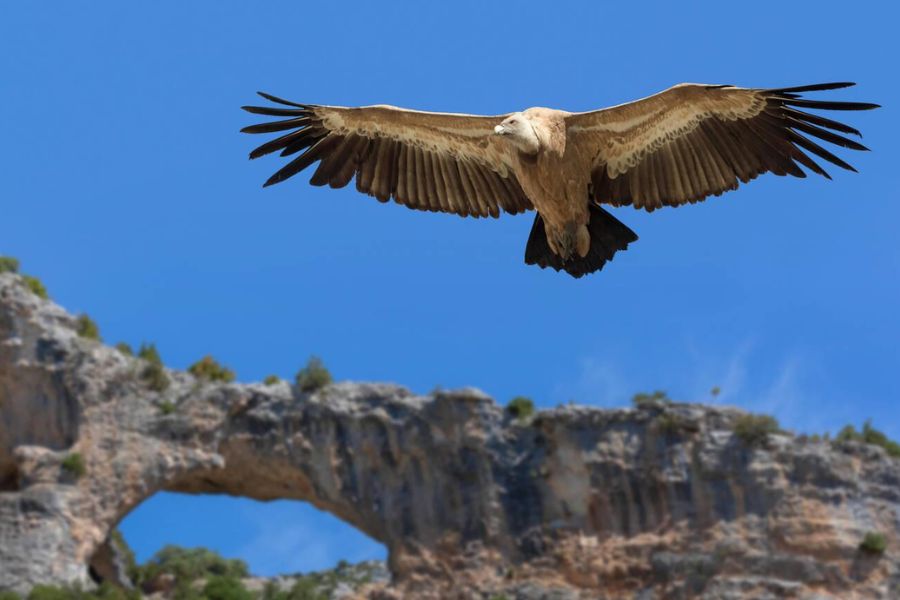
Here are my go-to rules for wildlife watching:
| Tip | Why It Matters |
|---|---|
| Stay on trails | Prevents plant and habitat damage |
| Stay quiet | Reduces animal stress and disturbance |
| Take only photos | Leaves the environment untouched |
Following these habits left me feeling like a welcome guest, not just another hiker passing through.
Planning a Hike Through Sierra de Guara
Before heading out, I checked out trail options, figured out what I’d need for rocky ground, and picked up tips to keep myself safe.
Each bit of planning made me feel more ready for Guara’s wild limestone scenery.
Best Routes for Limestone Adventures
Sierra de Guara is packed with trails that slice through canyons and ridges. My favorite route started in Alquézar’s old town, wound up through olive groves, and followed high cliffs.
The views stretched out over stone arches and deep gorges.
Some hikes pass hidden ermitas—those ancient chapels tucked between the rocks.
I even spotted griffon vultures circling above, their wings casting huge shadows over the limestone.
Popular hiking trails include:
- Ruta de las Pasarelas de Alquézar: Metal walkways along the Río Vero.
- Camino de las Ermitas: Visits secluded chapels and scenic overlooks.
- Barranco de Mascún: Tougher hike, but the steep rock walls are worth it.
Every trail offers something different, so I’d suggest picking one that matches your fitness and your interest in history or wildlife.
Essential Gear for Rugged Terrain
Hiking in the Sierra’s limestone country means rough, jagged paths. I never go without sturdy, supportive boots—the rocks are sharp, and loose gravel makes slipping easy.
Light trekking poles help me keep my balance, especially on climbs or descents.
I always pack at least 2 liters of water. The sun can be relentless, and natural springs are rare up high.
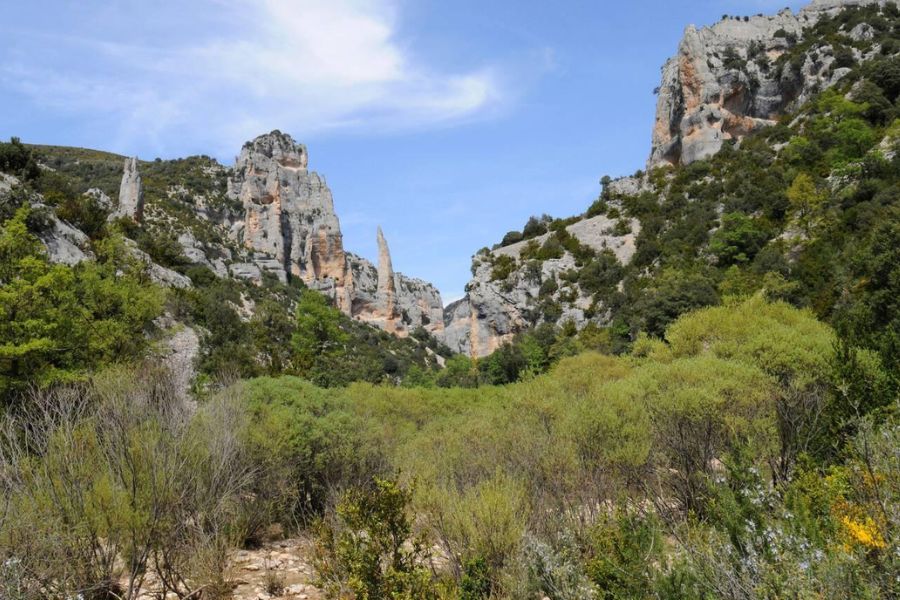
Here’s what I bring for a typical day:
| Item | Purpose |
|---|---|
| Hiking boots | Protect feet, prevent slips |
| Trekking poles | Stability, reduce fatigue |
| Sunhat & sunglasses | Shield from sun |
| Lightweight backpack | Hold water, snacks, first aid |
| Map and compass/GPS | Navigation |
Layers, sun protection, and a small first-aid kit are must-haves. Limestone scrapes up skin, so I go for long, light pants whenever I can.
Safety Tips and Navigation Advice
Trails here don’t always have clear signs. I usually download GPS tracks on my phone, but I keep a paper map in my pack just in case.
I never trust digital tools alone—cell service can disappear fast up in the rocks.
Weather here shifts in a blink. I try to check the forecast before heading out, but honestly, I mostly just watch the sky for sudden clouds or wind.
When rain hits, limestone turns into a slippery mess. I either slow down or just wait it out, hoping for drier ground.
Before I leave, I tell someone my route and when I plan to return. It’s surprisingly easy to get distracted by vulture sightings or old ermitas and lose all sense of time.
Having a rough plan keeps things safe. That way, I can focus on soaking up every moment in this dramatic landscape.
The People, Culture, and Flavors of the Guara Region
Chatting with locals really makes the Guara landscape come alive. Good food and unexpected flavors turn every hike into a little adventure for the senses.
Meetings with Local Hikers and Residents
As I walked the winding paths of Guara, I bumped into villagers and fellow hikers. Early mornings near Alquézar’s trailheads, I saw groups gathering with sturdy boots and easy smiles, swapping tips in both Spanish and Aragonese.
Locals told me about ermitas I’d never have found on my own. “This way for Nuestra Señora de la Viña,” one woman said, pointing with her walking stick and grinning as she showed me a shortcut only regulars know.
People in Guara reminded me that hiking isn’t just about the land. It’s also about stories, warm greetings, and those quick lessons in culture you pick up along the way.
Locals cracked jokes about the weather, shared fig bread, and explained village traditions when we rested in the shade of a plaza.
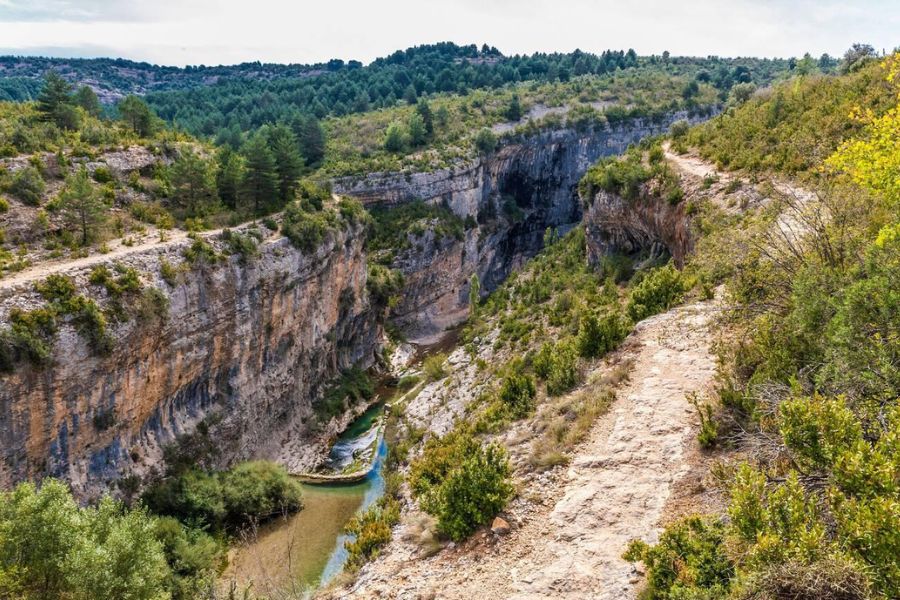
A café owner even told me about the annual vulture festival, describing how the whole town comes together to celebrate the birds soaring above the cliffs.
Sampling Aragonese Cuisine After a Day’s Hike
After hours on those limestone trails, hunger just smacked me in the face.
I found that Guara’s food feels hearty and packed with tradition.
In the tiny stone villages, menus offered up staples like migas (fried breadcrumbs with chorizo) and ternasco (roast lamb).
One night, I caved and went for a local set menu.
| Dish | Description |
|---|---|
| Migas | Fried breadcrumbs with sausage |
| Ternasco | Roast lamb, often with potatoes |
| Queso de Bierge | Creamy sheep’s milk cheese |
| Crespillos | Sweet, crispy spinach fritters |
Every meal wrapped up with homemade wine or sometimes a glass of orujo (fruit brandy).
Locals love to talk about how they pass their recipes down through generations.
Restaurants buzzed but still felt welcoming, serving up food made from simple, local ingredients.
Honestly, eating in Guara is about the people and the setting just as much as the flavors on your plate.

